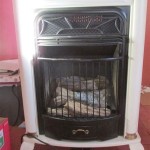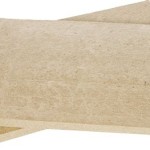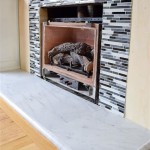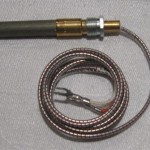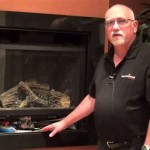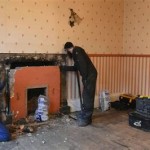Replacement Fireplace Inserts: A Comprehensive Guide
Fireplace inserts represent a crucial upgrade for homeowners seeking to improve the efficiency and aesthetics of their existing fireplaces. These self-contained units slide directly into the firebox of an existing fireplace, offering a significantly more efficient and controllable heating solution compared to traditional open hearth fireplaces. This article delves into the various aspects of replacement fireplace inserts, covering their benefits, types, selection criteria, and installation considerations.
Traditional open hearth fireplaces, while offering ambiance, are notoriously inefficient. A substantial portion of the heat generated escapes up the chimney, drawing warm air from the rest of the house to fuel the draft. This results in a net loss of heat and increased energy bills. Fireplace inserts address this issue by providing a closed combustion system that maximizes heat output and minimizes heat loss. They also offer greater control over the burning process, allowing for consistent and predictable heat generation.
Enhanced Heating Efficiency
The primary advantage of a replacement fireplace insert lies in its superior heating efficiency. Unlike open fireplaces, which can have efficiency ratings as low as 10%, fireplace inserts often boast efficiency ratings ranging from 60% to over 80%. This significant improvement stems from the closed combustion chamber, which allows for more complete burning of fuel and reduces the amount of heat lost through the chimney. Some models also incorporate features such as blowers, which circulate heated air into the room, further enhancing their heating capabilities. This improved efficiency translates directly into lower heating costs and a reduced reliance on central heating systems.
The efficiency rating of a fireplace insert is a critical factor to consider when making a purchase. This rating, typically expressed as a percentage, indicates the amount of heat produced relative to the amount of fuel consumed. Higher efficiency ratings signify a more economical and environmentally friendly heating solution. Homeowners should carefully examine the efficiency ratings of various models to determine the best option for their specific needs and heating requirements. Furthermore, understanding the rating system, whether based on higher heating value (HHV) or lower heating value (LHV), is essential for accurate comparison.
Types of Fireplace Inserts
Replacement fireplace inserts are available in several fuel types, each with its own distinct advantages and disadvantages. The most common types include wood-burning, gas-burning, and electric inserts. The choice of fuel type will depend on factors such as fuel availability, personal preferences, and environmental considerations.
Wood-burning inserts offer a traditional aesthetic and provide a source of renewable heat. However, they require a consistent supply of firewood, and their operation involves more hands-on maintenance, including loading wood, cleaning the firebox, and removing ashes. Gas-burning inserts, on the other hand, offer greater convenience and ease of use. They can be operated with the flip of a switch and require less maintenance than wood-burning models. Electric inserts provide the ultimate in convenience, requiring no fuel and minimal maintenance. They are often used for supplemental heating and aesthetic purposes, rather than as a primary heating source.
Each type of insert also varies in its venting requirements. Wood-burning inserts always require a chimney liner to safely vent exhaust gases. Gas inserts may require a chimney liner depending on the model, and electric inserts require no venting at all. These considerations impact the overall installation cost and complexity.
Key Considerations for Selection and Installation
Selecting the right replacement fireplace insert involves careful consideration of several factors. These include the size of the firebox, the desired heating capacity, the available fuel type, and the aesthetic preferences of the homeowner. It is crucial to accurately measure the firebox dimensions to ensure that the insert will fit properly. A too-small insert will leave unsightly gaps, while a too-large insert will not fit at all.
The heating capacity of the insert should be appropriate for the size of the room or area to be heated. Inserts are typically rated in terms of British thermal units (BTUs). Homeowners should consult with a qualified professional to determine the appropriate BTU rating for their specific needs. Over sizing an insert can lead to discomfort and inefficiency, while under sizing can result in inadequate heating.
Installation of a replacement fireplace insert typically requires the services of a qualified professional. This is particularly true for wood-burning and gas-burning inserts, which involve venting and fuel line connections. Proper installation is essential to ensure safe and efficient operation. Factors such as chimney inspection and cleaning, liner installation (if required), and gas line connections must be handled by experienced professionals. Failure to adhere to safety regulations and manufacturer's instructions can result in serious hazards, including carbon monoxide poisoning and fire.
Beyond the core functionality and safety considerations, homeowners should also consider the aesthetic appeal of the insert. Inserts are available in a wide range of styles, finishes, and designs, allowing homeowners to choose a model that complements their existing decor. Some models also feature realistic flame effects and decorative logs, enhancing the ambiance of the fireplace. Selecting an insert that aligns with the homeowner's personal style and enhances the overall aesthetic of the room can greatly increase satisfaction with the investment.
Finally, regular maintenance is crucial for ensuring the long-term performance and safety of a replacement fireplace insert. This includes cleaning the firebox, inspecting the venting system, and replacing worn parts as needed. Following the manufacturer's recommendations for maintenance will help to prolong the lifespan of the insert and prevent potential problems. Periodic professional inspections are also recommended to ensure that the insert is operating safely and efficiently.

Fireplace Insert Guide Fireplaces Direct Learning Center

Convert To Gas Installing Fireplace Inserts Doctor Flue

What Are The Types Of Fireplace Inserts Dc Service

Fireplace Inserts Everything You Need To Know Full Service Chimney

Fireplaces Inserts Wood Gas Fireplace Xtrordinair

Fireplaceinserts Net Osburn 1100 Fireplace Insert

Fireplaces Inserts Wood Gas Fireplace Xtrordinair
How To Install An Electric Fireplace Insert

What To Know Before Ping For A Fireplace Waldorf Md

Gas Fireplace Insert Cost Forbes Home
Related Posts

